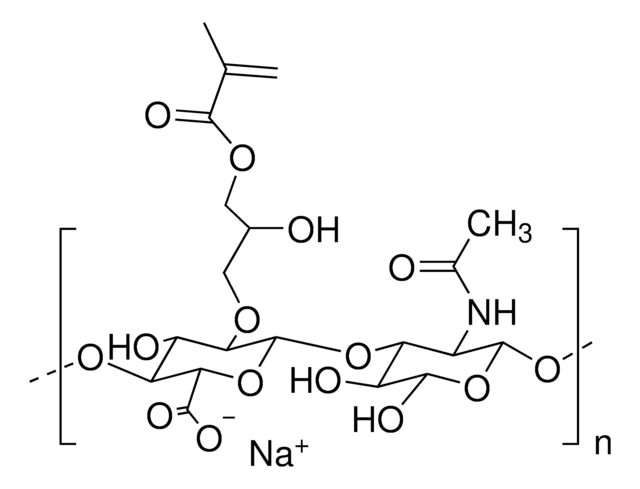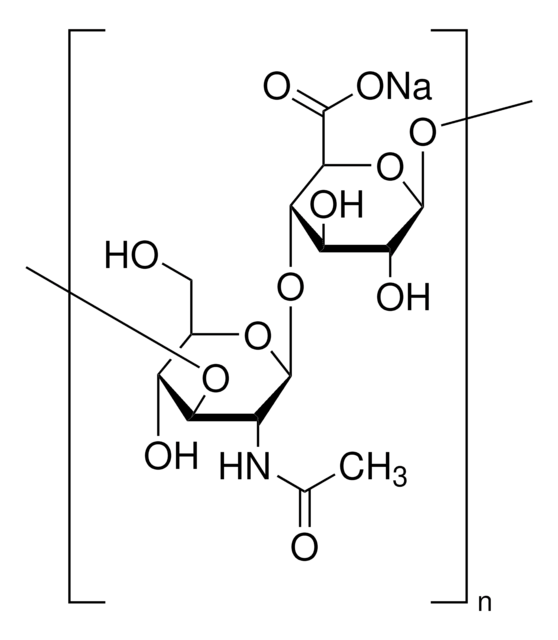914304
Hyaluronic acid methacrylate
average degree of substitution 35%, average Mw 175000
Synonyme(s) :
Functioanlized hyaluronic, HA methacrylamide, HAMA, Hyaluronic acid MA
About This Item
Produits recommandés
Description
NMR: Conforms to structure
Niveau de qualité
Forme
(powder or chunk(s) or fibers)
Poids mol.
average Mw 175000
Couleur
white to off-white
Température de stockage
2-8°C
Catégories apparentées
Application
Code de la classe de stockage
11 - Combustible Solids
Classe de danger pour l'eau (WGK)
WGK 3
Point d'éclair (°F)
Not applicable
Point d'éclair (°C)
Not applicable
Faites votre choix parmi les versions les plus récentes :
Certificats d'analyse (COA)
Vous ne trouvez pas la bonne version ?
Si vous avez besoin d'une version particulière, vous pouvez rechercher un certificat spécifique par le numéro de lot.
Déjà en possession de ce produit ?
Retrouvez la documentation relative aux produits que vous avez récemment achetés dans la Bibliothèque de documents.
Notre équipe de scientifiques dispose d'une expérience dans tous les secteurs de la recherche, notamment en sciences de la vie, science des matériaux, synthèse chimique, chromatographie, analyse et dans de nombreux autres domaines..
Contacter notre Service technique







